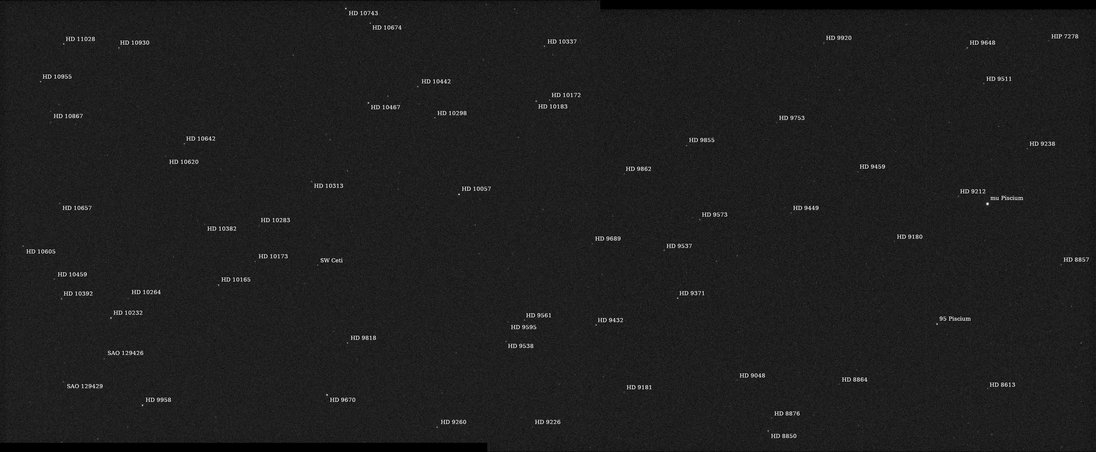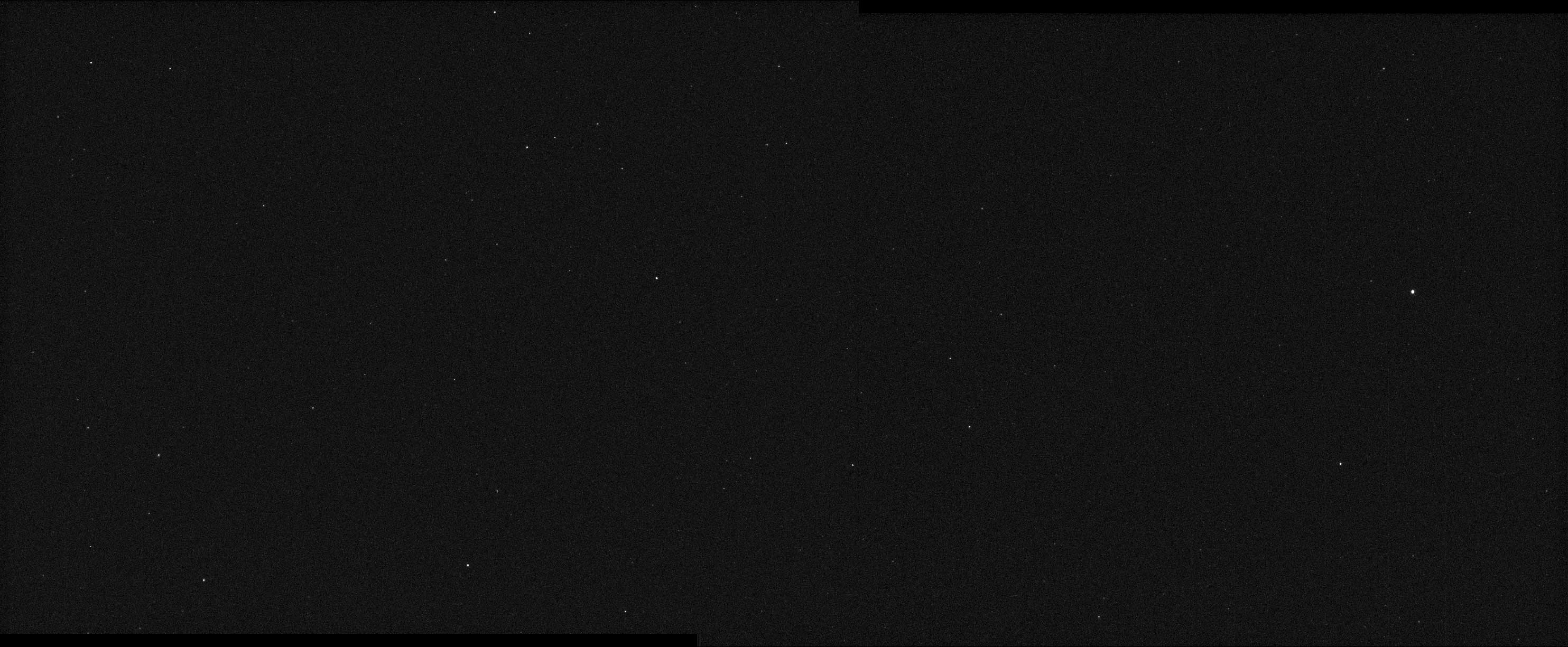NASA's Psyche spacecraft finds its 'first light' while zooming to a metal asteroid (image)
The spacecraft's twin cameras have produced a 68-image stellar mosaic.

It was a big day for NASA's Psyche spacecraft on Dec. 4, the day the probe finally opened its eyes to the universe.
Since launching atop a SpaceX Falcon Heavy rocket on Oct. 13 — the first interplanetary mission for the Heavy, in fact — Psyche has been essentially traveling the cosmos in darkness, as scientists had yet to turn on the solar-winged craft's cameras. It's currently on its way to study the asteroid for which it's named, 16 Psyche, that sits somewhere between our fellow solar system planets Mars and Jupiter. In short, this space rock is of major interest to planetary researchers because it's believed to be made almost entirely of metal, and in particular, iron and nickel.
That's quite a big deal because those are the specific metals found in Earth's core, meaning that, in a way, 16 Psyche offers us a roundabout method of analyzing the center of our own planet — something we really can't do directly. And on Dec. 5, the mission team announced that on its way to 16 Psyche, the Psyche spacecraft's imaging instrument (a set of twin cameras) has officially taken its first space photo.
What you see above is a mosaic of raw data collected by the craft on Dec. 4, showcasing a spread of stars visible from Psyche's vantage point. "Raw data" simply means background noise in the image like extraneous light signals hasn't been extracted, but the team says they'll be working on such fine-tuning in days to come.
Like with most every seminal image from a spaceborne lens, this one's wonderfully called Psyche's "first light."
Related: NASA's Psyche metal asteroid mission will have a big impact on astronomy

"These initial images are only a curtain-opener," Arizona State University's Jim Bell, the Psyche imager instrument lead, said in a statement. "For the team that designed and operates this sophisticated instrument, first light is a thrill."
Get the Space.com Newsletter
Breaking space news, the latest updates on rocket launches, skywatching events and more!
As Bell explains, the team will use star images like these to test how Psyche's imager is functioning in preparation for 2026, when the spacecraft will make a flyby of Mars and hopefully snap a few stunning views of the Red Planet. "And finally, in 2029 we'll get our most exciting images yet – of our target asteroid Psyche. We look forward to sharing all of these visuals with the public," Bell said.
If you're wondering about some of the image specs, the portrait itself actually consists of a total 68 separate images, all of which encapsulate bodies in the constellation Pisces simply because that's where the cameras happened to be pointing when they switched on. The brightest star seen is named "mu Pisces" with a magnitude of 4.9 and the other stars in view have magnitudes between 7 and 9.
For context of the magnitude system, something with a magnitude of 0 is 100 times brighter than something with a magnitude of 5. The full moon has a magnitude of -12.6 as seen from Earth, and the brightest satellite in the night sky, Bluewalker 3, has reached a peak magnitude of 0.4 (as you might guess, astronomers are not very happy about that latter bit.)
Further, the field of view, the team says, is about 8 degrees wide by 3.5 degrees tall. Of the two cameras, aptly named "Imager A" and "Imager B," A took the left half of the mosaic while B took the right half. By taking a bunch of images such as this one, then calibrating accordingly, the Psyche team wishes to preemptively arm the spacecraft with the right settings before it starts capturing data about its asteroid target. Upon imaging 16 Psyche, the scientists say they'll be constructing 3D maps with both visible and invisible wavelengths emanating from the object.
Notably, among other achievements, Psyche's innovative Deep Space Optical Communications (DSOC) device earned its first light medal as well just last month, sending a laser signal to Earth from something like 10 million miles away. Now, the team is looking to the week of Dec. 11, when the instrument's neutron-detecting sensors, meant to dissect 16 Psyche's chemical composition — arguably the mission's main drum roll — will begin beeping away as well.
Speak soon, Psyche.
Join our Space Forums to keep talking space on the latest missions, night sky and more! And if you have a news tip, correction or comment, let us know at: community@space.com.

Monisha Ravisetti is Space.com's Astronomy Editor. She covers black holes, star explosions, gravitational waves, exoplanet discoveries and other enigmas hidden across the fabric of space and time. Previously, she was a science writer at CNET, and before that, reported for The Academic Times. Prior to becoming a writer, she was an immunology researcher at Weill Cornell Medical Center in New York. She graduated from New York University in 2018 with a B.A. in philosophy, physics and chemistry. She spends too much time playing online chess. Her favorite planet is Earth.









